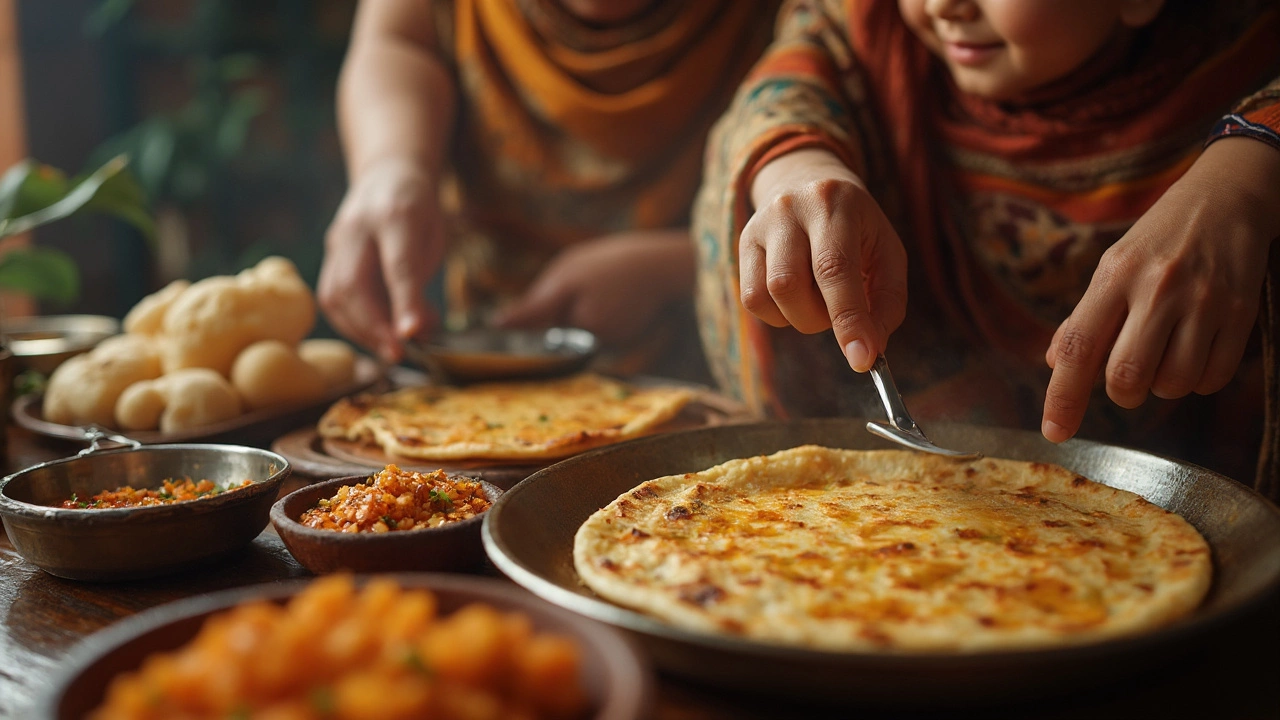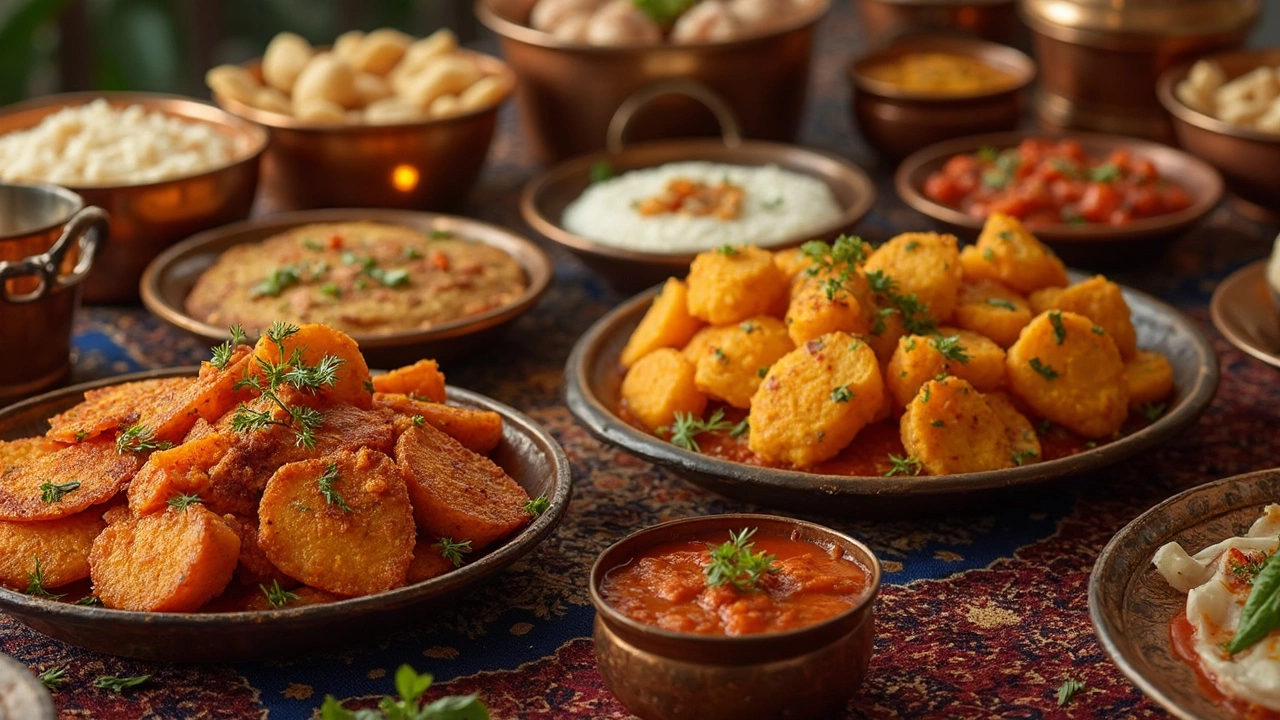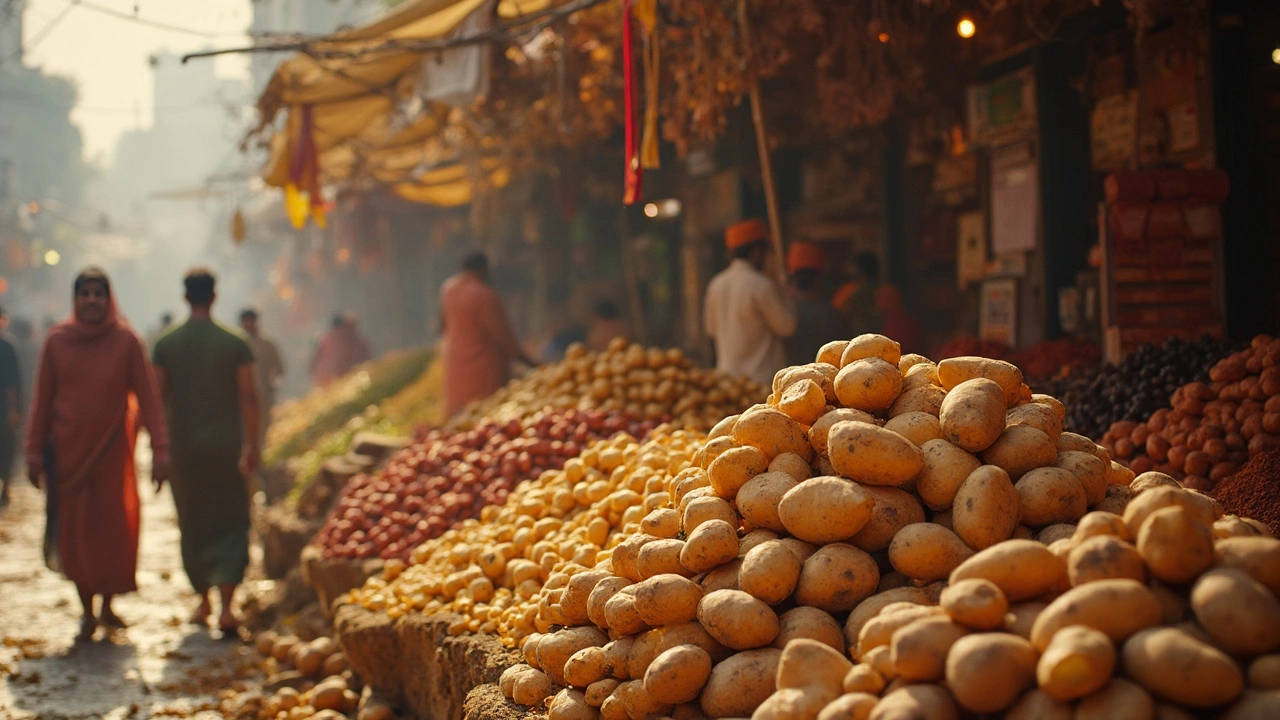Ask anyone who’s tasted classic Indian food and odds are, they’ll remember a potato dish or two. But here’s a little twist: potatoes didn’t start out as part of India’s culinary story. Surprising, right? Nowadays, you’ll find them everywhere from North Indian curries to street food, making you wonder—are potatoes basically Indian now? I’ve gotten myself into far too many kitchen experiments trying to answer this question while juggling spices, potatoes, and a toddler climbing kitchen chairs just to grab a paratha. It’s wild how a South American tuber has become so tightly knit into Indian dinners and lunchboxes.
How Potatoes Landed in Indian Kitchens
If you’d asked my grandparents, potatoes fell from the Indian sky. But no, they actually wandered in by sea. Potatoes are originally from the Andes in South America. Thanks to Portuguese traders, potatoes sailed to Indian shores in the late 16th or early 17th century. Back then, people didn’t exactly throw a welcome party for them. The local royal kitchens? Completely unimpressed! It took decades—maybe more—but potatoes slipped in quietly, first along the west coast and then across the northern wheat belt.
The British Raj years deserve a sarcastic slow clap for making potatoes cheap, easily available, and downright ordinary. Slowly, foodies and home-cooks warmed to these humble tubers. Suddenly, farmers found they grew like crazy in Bengal, Uttar Pradesh, and parts of Punjab. Potato output boomed, and by the time my parents were kids, everyone was making aloo sabzi, aloo paratha, and samosas with potato fillings—just like it had always been that way.
When you think about classic potato moments in India, a few iconic ones come to mind. North Indian aloo gobi (potato and cauliflower curry) turns up in every home kitchen. Bengali aloo posto (potatoes with poppy seeds) is comfort food for an entire region. Samosas stuffed with peas and potatoes? Every street market smells like them at tea-time. Chaat (a lip-smacking street food meltdown of spicy potatoes, chutney, and crunchy bits) is a reason school kids around the country beg for pocket money. And in the south, masala dosa with its golden aloo filling basically rules the breakfast table.
These days, potatoes grow in about 23 Indian states, and the country sits near the top of global potato producers. A recent Agricultural Ministry report noted that Uttar Pradesh alone grows nearly half of India’s potatoes, and they even export them. But walk through any sabzi mandi (vegetable market), and you’ll spot potatoes—sandy, newly dug, or packed in dusty sacks—lining every corner, ready for curries, snacks, or a quick fry-up.
It’s funny—because the older cookbooks, before the 18th century, barely mention potatoes. Most traditional recipes used yams, sweet potatoes, or other roots until this little brown newcomer took over. Now, though, if you skipped potatoes in everyday Indian cooking, most of us wouldn’t know what to feed the kids, myself included. You’ll find that almost every region—Punjab, Bengal, Gujarat, Kerala—has a signature potato treat, and the ways people use them vary like languages do from one state to the next. Why all this love for potatoes? They soak up spices, stretch a meal, taste good in nearly any shape, and cost less than fancy vegetables. That’s a home cook’s jackpot.

Spotting Potatoes in Indian Dishes: North, South, East, West
When you’re scanning an Indian menu, you’ll see potatoes everywhere. Let’s take North India first: there’s aloo paratha—potato-stuffed flatbread served with butter and tangy pickle. Even finicky toddlers say yes to this. Then you get aloo tikki, crispy potato patties that show up at every evening tea. Move west and you’ll trip over batata vada in Maharashtra: spiced mashed potato balls, dipped in chickpea batter and fried, perfect with a cuppa chai. Gujaratis pile potatoes into undhiyu, a winter mixed vegetable dish that cooks for hours and turns buttery soft. And Punjab’s aloo gobi, that classic blend of potatoes and cauliflower, is a Sunday lunch regular at our house (especially when I’m out of ideas and fridge veggies).
Drop down to the south, and things get even more interesting. The masala dosa of Karnataka and Tamil Nadu is a paper-thin rice crepe rolled with a gorgeous mound of spiced potatoes inside. Kerala’s stew will sometimes bring out potatoes with coconut milk and black pepper, laidback and creamy. If you’re lucky enough to attend an Onam sadhya (Kerala feast), the potato dishes will blend with bananas, coconut, and pickles on that big banana leaf plate. And if you think Bengalis only eat fish, try their aloo posto or dhokar dalna (lentil cakes with potato curry).
Street food includes potatoes everywhere—especially if it’s fried, spicy, or both. You’ll find samosas filled with potato and peas, kathi rolls in Kolkata swaddling spicy potatoes in paratha bread, aloo chaat dripping with tamarind sauce, and Mumbai’s vada pav (spicy mashed potato fritters in a bread roll) that acts as India’s original veggie burger. My son Neerav asks for these any time we visit family in Mumbai—he’ll take extra green chutney with his, please!
Potato even plays peacemaker at home when someone’s grumpy about vegetables. Got nothing but a few tomatoes and onions? Throw in potatoes and make a quick curry—aloo curry is always a crowd-pleaser. Add boiled potatoes to egg bhurji and watch breakfast disappear. Even in festive meals, like when we celebrate Holi or Diwali, potato snacks turn up everywhere: dahi bhalla (lentil dumplings with spicy potato) or chivda (spiced potato flakes with peanuts and raisins).
Sometimes, potatoes aren’t in the starring role—they just do the heavy lifting behind the scenes. You’ll see them bulking up mutton biryani in Kolkata, mellowing out the masalas in chicken curries, and soaking up all that delicious gravy in vegetable korma. I’m not kidding: in some communities, a Sunday lunch isn’t considered complete without a big bowl of aloo curry tucked in somewhere, even with meat and fish on the table.
Still, it’s not true that all Indian food has potatoes. If you dig into traditional southern thali meals, dal-based stews, or simple roti-sabzi combos, you’ll find plenty of dishes without any. Many regional and older recipes stick to native vegetables. Yet, as modern kitchens get busier and family dinners need to be stretched for extra guests (or surprise visits from the in-laws), potatoes are often the cheapest, tastiest solution.

Tips and Trivia: Everything You Wanted to Know About Potatoes in Indian Food
Ready for some curious potato wisdom? Here’s something not everyone knows—potatoes actually taste different depending on when you buy them. Early spring potatoes are sweeter, softer, and great for frying, while winter potatoes are sturdier and work better for rich curries or stuffing in samosas. The classic ‘aloo’ you find at Indian greengrocers in Bristol is probably the Atlantic or Kufri variety, both known for their fluffy texture and ability to absorb bold spice blends.
Potatoes in India are rarely peeled for everyday curries, mainly to save time and nutrition—fiber lives just under the skin. My grandmother used to say, “Good aloo never needs a full face-wash,” and I agree—scrub them clean, chop, and cook, skin and all. Little ones like my Neerav actually love the extra texture, especially in dry aloo fry tossed with cumin and coriander.
If you want to experiment with potatoes in your own kitchen, start simple. Boil potatoes, then fry them up with mustard seeds, cumin, turmeric, and chili—basic aloo fry. Goes well as a side or even stuffed in a sandwich with a squish of lime. Want to go classic North Indian? Try making aloo matar: sauté cubed potatoes and peas with tomatoes, ginger, garlic, garam masala, and a splash of water. You’ll be grateful for leftovers the next day.
Another fun thing—potatoes have a neutral taste that absorbs just about every flavor you throw at them, which makes them a hit with every age group and regional kitchen. They’re also naturally gluten-free, making Indian potato snacks a safe bet for gluten-sensitive friends. Keep an eye on portion sizes though. Potatoes are easy to love, but if you’re watching carbs, swap in sweet potatoes or toss in extra veggies alongside.
For meal-preppers (and tired parents), potatoes are a weeknight savior. Boil a big batch, stash in the fridge, and just dice one or two for a quick curry, paratha, or sandwich later. If you drizzle leftover potato curry over toasted bread, you practically get a Desi version of loaded toast any Brit would envy.
- Want crispier aloo tikkis? Chill your mashed potatoes and pat them dry before frying.
- Craving restaurant-style dum aloo? Use small baby potatoes, prick their skins, and slow-cook in rich yogurt-gravy for softness.
- No pressure-cooker? Microwave boiled potatoes for five minutes, let them rest before peeling—they won’t get mushy.
And here’s a quirky fact—potatoes are considered a ‘satvik’ (pure) food in Indian spiritual diets. That means they can be eaten during religious fasts along with things like sago (sabudana) and peanuts. My friend’s mom swears by sabudana khichdi with diced potatoes during Navratri.
So, does Indian food have potatoes? Absolutely. But it’s less about the tuber itself and more about what you can cook, share, and stretch for your table. Each region, city, and even family has a unique way of bringing out big flavors from simple aloo, whether served with a rich curry, rolled into a dosa, or fried up and dusted with chaat masala. Potatoes are immigrant guests that became household fixtures—filling, adaptable, gentle on the wallet, and perfect for a meal that needs to taste like home, whichever corner of India you’re in.
